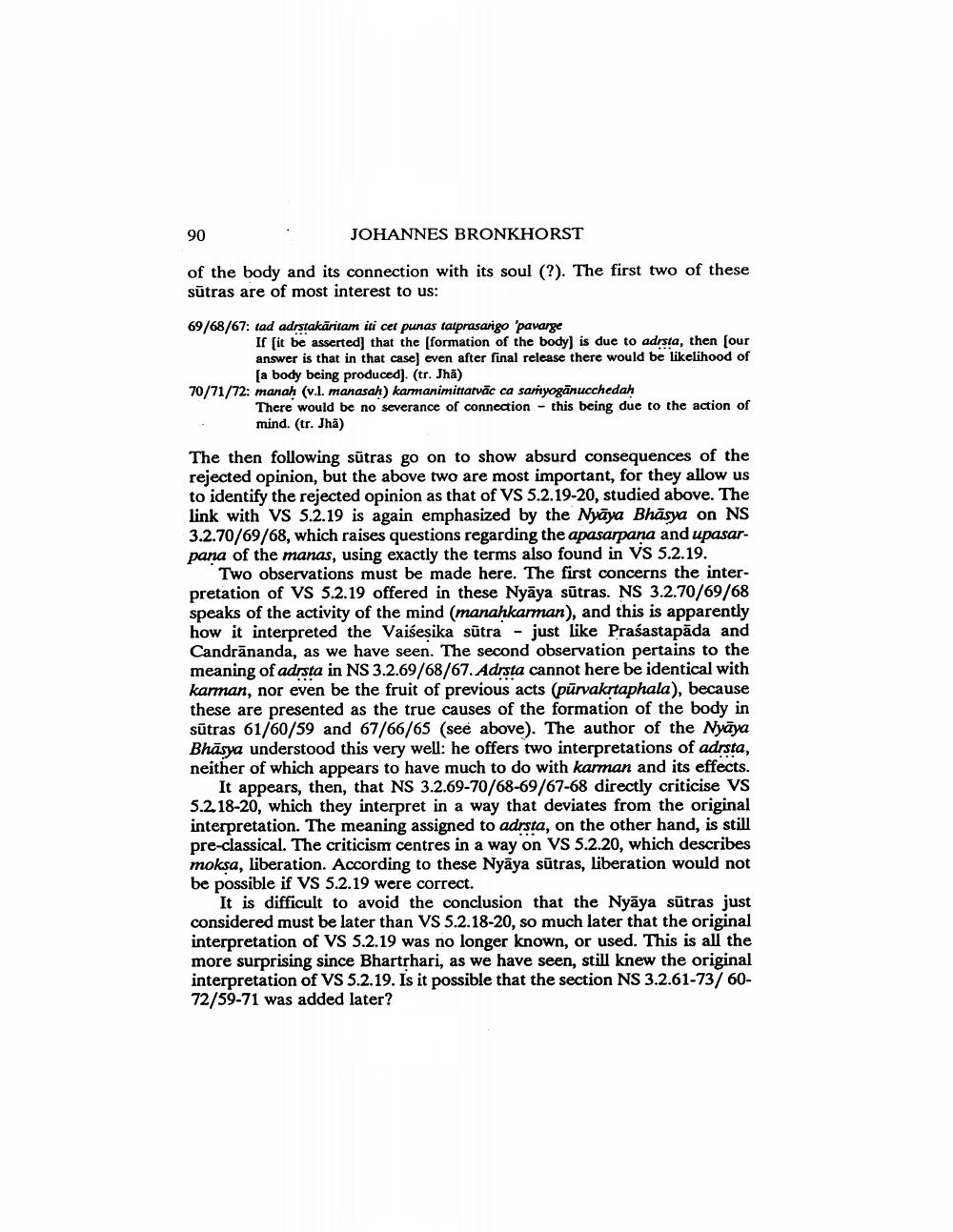________________
90
JOHANNES BRONKHORST
of the body and its connection with its soul (?). The first two of these sūtras are of most interest to us:
69/68/67: tad adrstakāritam iti cet punas tatprasargo 'pavarge
If (it be asserted] that the (formation of the body) is due to adrsta, then (our answer is that in that case) even after final release there would be likelihood of
(a body being produced). (tr. Jhā) 70/71/72: manah (v.l. manasah) karmanimittarvāc ca saryogānucchedah
There would be no severance of connection - this being due to the action of mind. (tr. Jha)
The then following sūtras go on to show absurd consequences of the rejected opinion, but the above two are most important, for they allow us to identify the rejected opinion as that of VS 5.2.19-20, studied above. The link with VS 5.2.19 is again emphasized by the Nyāya Bhāsya on NS 3.2.70/69/68, which raises questions regarding the apasarpana and upasarpana of the manas, using exactly the terms also found in VS 5.2.19.
Two observations must be made here. The first concerns the interpretation of VS 5.2.19 offered in these Nyāya sūtras. NS 3.2.70/69/68 speaks of the activity of the mind (manahkarman), and this is apparently how it interpreted the Vaišesika sūtra - just like Prasastapāda and Candrānanda, as we have seen. The second observation pertains to the meaning of adrsta in NS 3.2.69/68/67. Adrsta cannot here be identical with karman, nor even be the fruit of previous acts (pūrvakrtaphala), because these are presented as the true causes of the formation of the body in sūtras 61/60/59 and 67/66/65 (see above). The author of the Nyāya Bhāsya understood this very well: he offers two interpretations of adrsta, neither of which appears to have much to do with karman and its effects.
It appears, then, that NS 3.2.69-70/68-69/67-68 directly criticise VS 5.2.18-20, which they interpret in a way that deviates from the original interpretation. The meaning assigned to adrsta, on the other hand, is still pre-classical. The criticism centres in a way on VS 5.2.20, which describes moksa, liberation. According to these Nyāya sūtras, liberation would not be possible if VS 5.2.19 were correct.
It is difficult to avoid the conclusion that the Nyāya sūtras just considered must be later than VS 5.2.18-20, so much later that the original interpretation of VS 5.2.19 was no longer known, or used. This is all the more surprising since Bhartrhari, as we have seen, still knew the original interpretation of VS 5.2.19. Is it possible that the section NS 3.2.61-73/ 6072/59-71 was added later?




